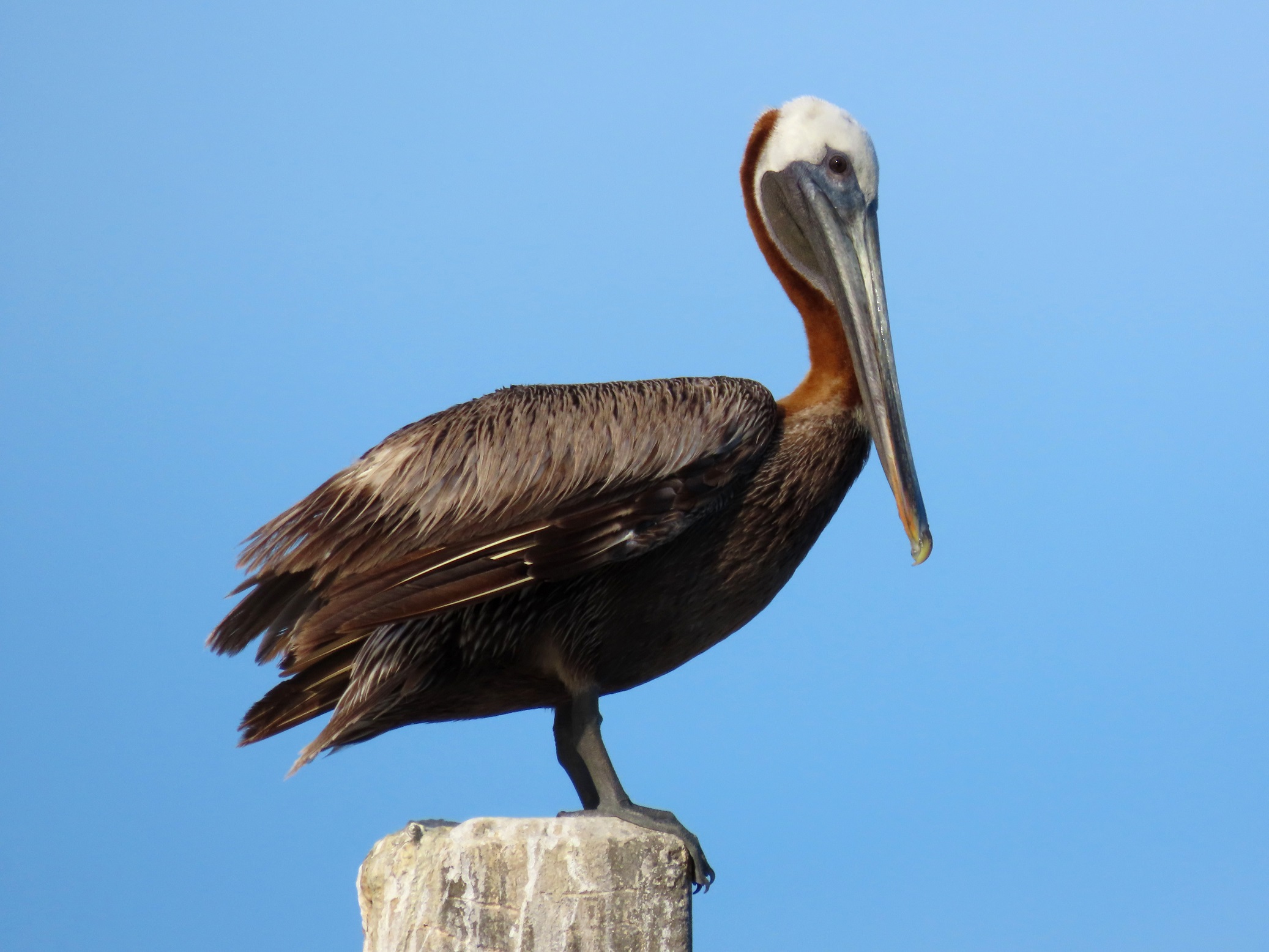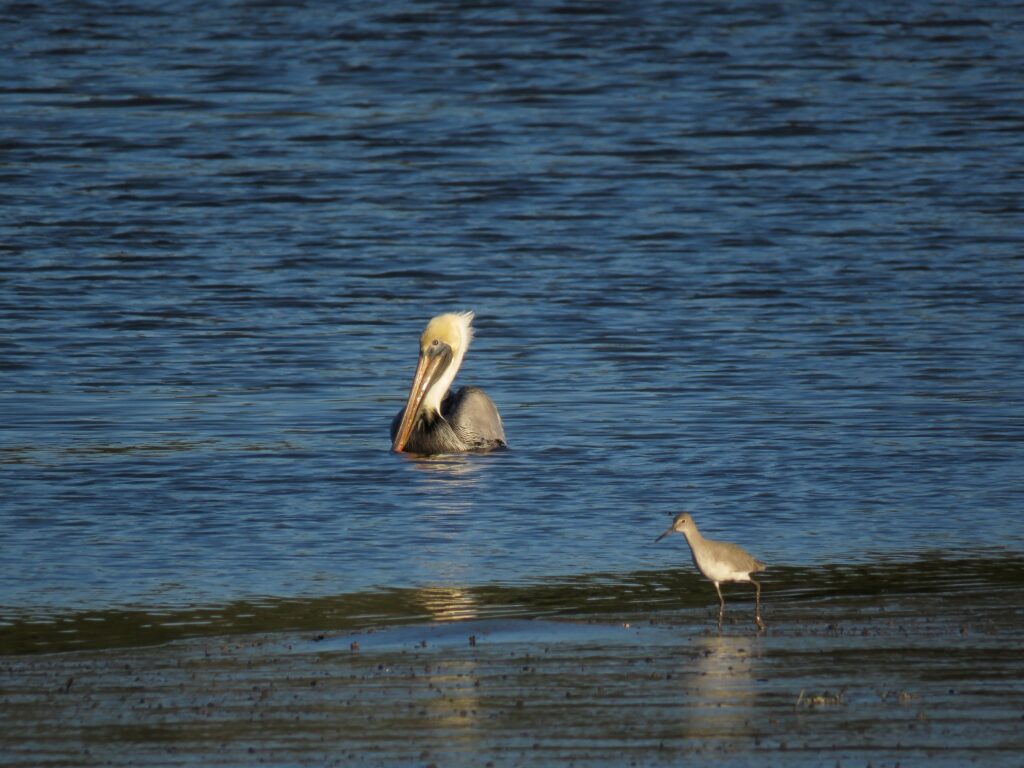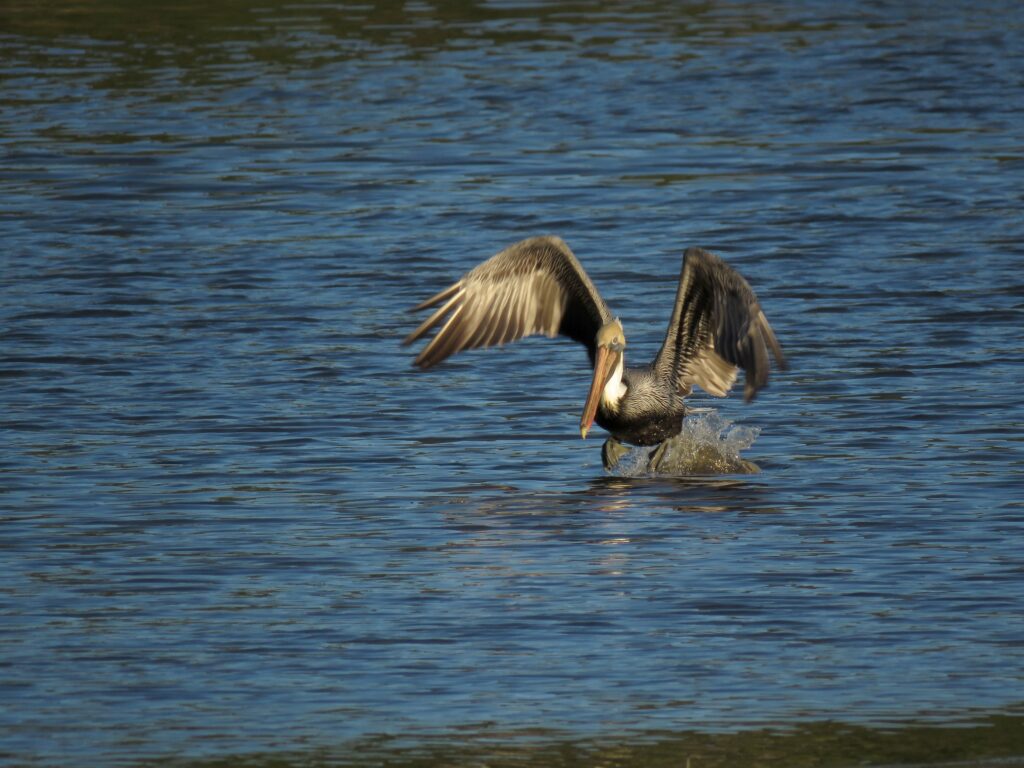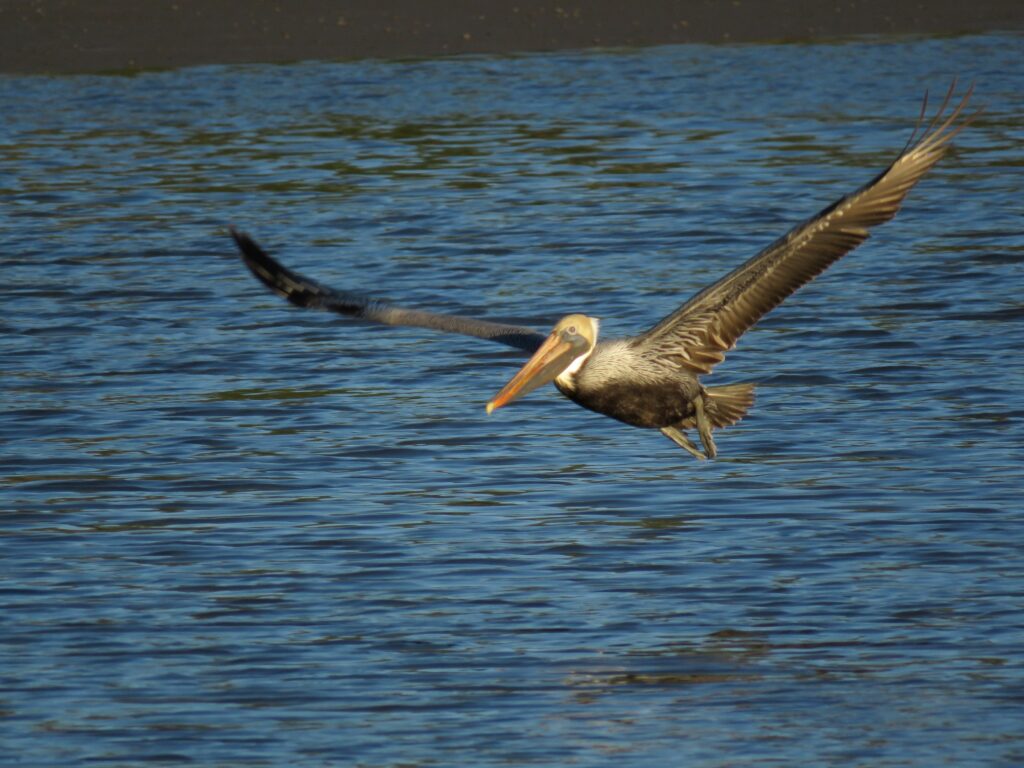



This week for Flora and Fauna Friday we have a staple seashore sailor, the Brown Pelican (Pelecanus occidentalis).
The breeze flows off the surf as it crashes into the strand, kicking sand into shimmering rivers. The reflective projectiles course over your ankles and ricochet off your cheeks. Squinting to brave the buffeting, shadows slap across your vision one after another. Daring to look you avert your gaze upward to greet a convoy of broad brown wings brazenly barreling into the barrage of the breeze. Before they’ve even left your sight a second set sails past only inches above the surf. A pod of Brown Pelicans tip their wings towards you as they continue along their commute.
The Brown Pelican is a very large species of bird found throughout the tidal regions of the Lowcountry. They have a heavy frame, huge wingspan, thick legs, and a long neck supporting an even longer bill. Their backs are cloaked in streaks of silver and grays and their bellies bathed in ebony-brown. Their chest tapers in to the ivory of their neck as it swoops into the blonde of their head. Below their eye hangs their massive bone-and-orange bill, tied to their neck with a stretchy shale-gray pouch. Brown Pelicans can often be found perched upright atop a pylon or pier, floating atop the ocean or creek, slicing through the air over the beach, or careening full speed in a nose dive towards the water. Brown Pelicans are plunge feeders that eat fish. Yet, they employ a unique technique from other such birds, like the Kingfisher or Osprey. Rather than spearing or grabbing the fish, Pelicans scoop. As they hit the water, they open their mouth. Their elastic throat pouch and lower jawbone expand with the force of the water to encircle the fish and, as they slow to a stop and close their mouth, the water rushes back out but the fish remains trapped in the pouch.
The Brown Pelican is a species we all know and love. It’s hard to spend more than a moment on the beach without a caravan cruising past. But it was not always this way. Brown Pelicans nearly went extinct in the 1970s. They were especially hard hit by the aftereffects of the insecticide DDT, which caused widespread nesting failure. Brown Pelicans more-or-less stand on their eggs to incubate them and DDT makes bird eggs brittle. Thus these heavy birds had quite the hard time nesting and the species was put on the endangered species list in 1970. With the ban on DDT and similar pesticides and coordinated protection efforts by USFWS and state wildlife agencies, the Brown Pelican was able to make a full recovery. By the mid-1980s, they had done a complete 180 in the southeast. In 2009 they were officially delisted across the United States. Today, with how abundant they are, it’s hard to imagine how close to the brink the species once was.